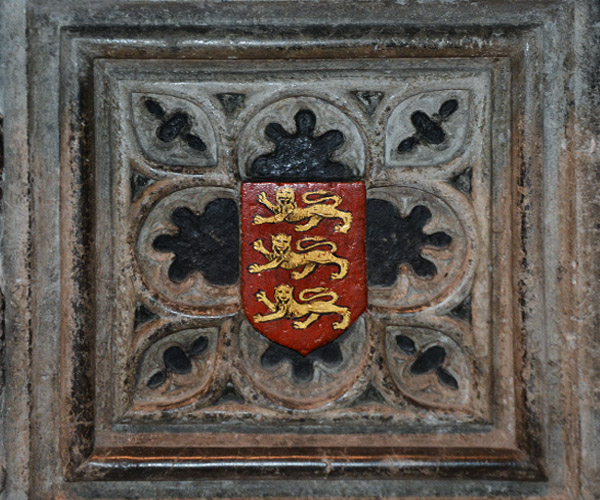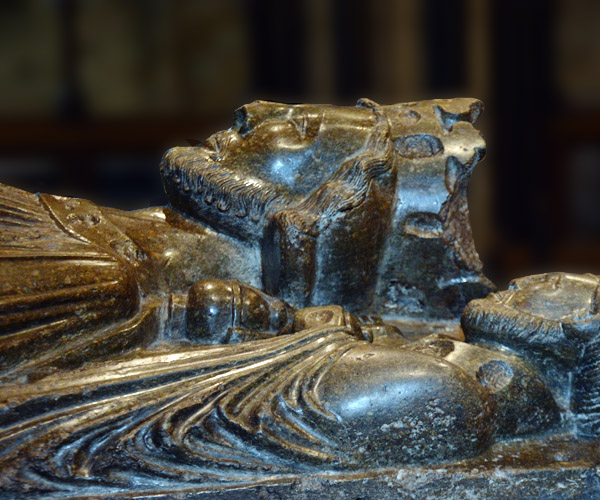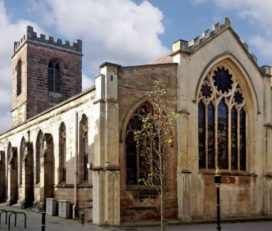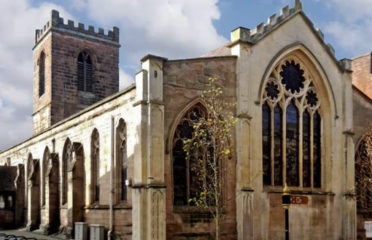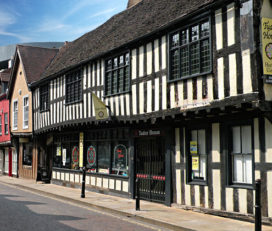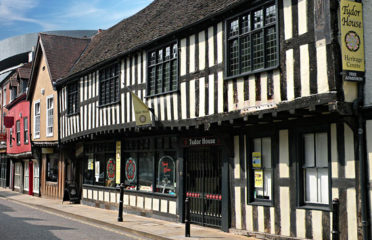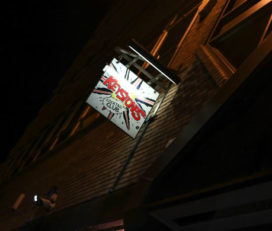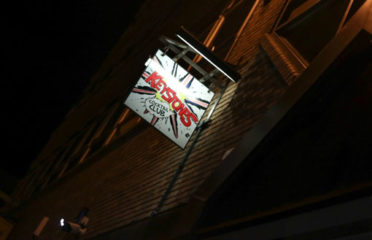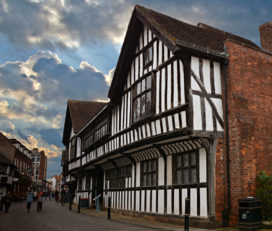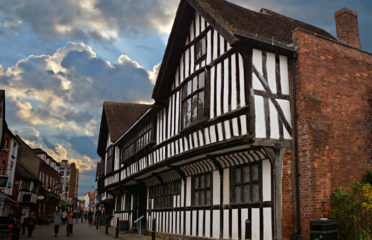The royal tomb of King John of England – 24 December 1166 – 19 October 1216
King John was the youngest son of Henry II of England and Eleanor of Aquitaine and was born on 24 December 1166 making him the 7th king to rule Britain since the Norman invasion and conquest of 1066. As the youngest of five brothers his ascension to the throne was unlikely. However, after three of his older brothers died young of illness and injury he became second in line to throne after his brother King Richard the Lionheart. Although John organised a failed rebellion against his older brother he was nevertheless crowned king after Richard was killed while attempting to recapture Normandy.
The reign of King John was a turbulent one exasperated by the loss of overseas territories and rebellion in England. The records from the time reveal a series of contradictory accounts. According to some, John was a fair and generous man forced to introduce unwelcome but essential taxes to fund the extravagant wars of his older brother while other accounts depict him as cruel and greedy with a great love of jewels and gold who taxed the poor to reward the rich. He certainly was forced to sign the famous Magna Carta document passing over rights and powers to the English Barons which is often seen as the first official recognition of quasi democracy by a modern king.
 The peace of the Magna Carta did not hold and John was soon at war again with the Barons. While on campaign he visited Bishop’s Lynn (now Kings Lynn) in Norfolk where he fell ill. Some say he was poisoned while others claim it was caused merely by dysentery instigated by an excess of overripe fruit. Legend has it that before he died he hid his vast fortune of jewels and gold and claimed they had been lost while trying to cross the marshes of The Wash.
The peace of the Magna Carta did not hold and John was soon at war again with the Barons. While on campaign he visited Bishop’s Lynn (now Kings Lynn) in Norfolk where he fell ill. Some say he was poisoned while others claim it was caused merely by dysentery instigated by an excess of overripe fruit. Legend has it that before he died he hid his vast fortune of jewels and gold and claimed they had been lost while trying to cross the marshes of The Wash.
His body was taken to Worcester Cathedral where it was buried. The carving on John’s tomb is exceptional as it is an excellent depiction of the real man at the time of his death rather than a heroic interpretation. Dating back to 1232, it is also the oldest royal effigy in England. Oddly, John holds an unsheathed sword in his left hand and when the tomb was opened in 1529 he was discovered with a real sword by his side.
Many mysteries surround King John who has, for centuries, been portrayed as the villain of the Robin Hood stories and used as an example of a greedy and grasping ruler. His treasure was never found, the truth of his nature is shrouded in medieval propaganda and even the symbolism of the unsheathed sword is also still unexplained.
ADDRESS & CONTACT
Worcester Cathedral, College Yard, Worcester, Worcestershire, England – WR1 2LA
POSTCODES
Sat Nav Postcode: WR1 2LA
Sat Nav Postcode Parking: WR1 2LU




